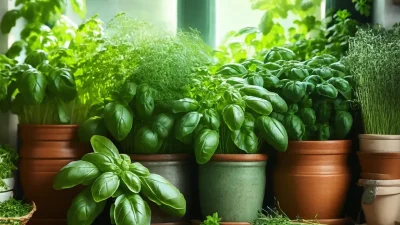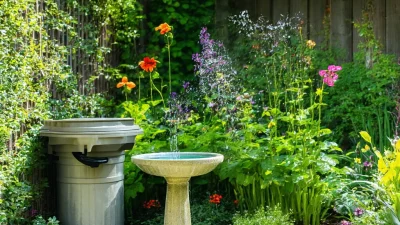Why Companion Planting is the Future of Sustainable Gardening
Gardening has always been a labor of love, but in today’s world, it’s more important than ever to grow sustainably. Enter companion planting—a timeless practice that’s gaining traction as an eco-friendly solution for modern gardeners. If you’re ready to dive into the fascinating world of plant relationships and unlock the secrets to a thriving, pest-resistant garden, read on!
What is Companion Planting?
Companion planting is all about pairing plants that support each other’s growth. Think of it as nature’s version of a team effort. Some plants act as natural pesticides, others improve soil health, and some simply make great neighbors by providing shade or physical support. By strategically placing these botanical buddies together, you can create a balanced ecosystem where everyone benefits.
Benefits Beyond the Obvious
Beyond just looking pretty together, companion plants offer practical advantages:
- Pest control: Certain plants release chemicals that repel pests or attract their natural predators. For example, marigolds are naturals at deterring nematodes.
- Better pollination: Flowers like nasturtiums and calendula act as magnets for bees and butterflies, ensuring your veggies get the attention they need.
- Soil enrichment: Legumes such as beans and peas are nitrogen fixers, which means they literally feed the soil and make it more fertile over time.
Tried-and-True Companion Planting Pairs
Ready to start pairing? Here are some classic combinations that work wonders:
The Three Sisters: Corn, Beans, and Squash
This Native American tradition is a masterclass in mutual support. The tall corn provides a natural trellis for beans, which in turn fix nitrogen in the soil. Meanwhile, squash acts as a living mulch, shading out weeds and retaining moisture. Together, they create a harmonious trio that’s both productive and beautiful.
Rosemary and Carrots
Rosemary is more than just a fragrant herb—it’s also a powerful pest deterrent. Planted alongside carrots, it helps keep away carrot flies while adding an aromatic touch to your garden. Plus, the contrast between its needle-like leaves and delicate carrot greens creates an eye-catching display.
Basil and Tomatoes
Tomatoes and basil are more than just a delicious duo in the kitchen; they make great companions in the garden too. Basil repels tomato hornworms and other pests while improving the flavor of your tomatoes. And let’s not forget about those beautiful, fragrant leaves—they’re a feast for both you and pollinators!
Tips for Success
To make the most of companion planting, keep these tips in mind:
- Research local pests: Understand which bugs are common in your area so you can choose plants that specifically target them.
- Mix and match textures: Combine tall, medium, and low-growing plants for a balanced look and function.
- Rotate crops annually: This helps prevent soil-borne diseases and keeps your garden vibrant year after year.
Gardening by Climate Zone
Your climate plays a big role in which plants thrive together. Here’s how to adapt companion planting based on where you live:
- Warm climates: Consider heat-tolerant companions like okra and sunflowers, or try pairing eggplant with peppers for mutual pest protection.
- Cool climates: Root vegetables like beets and radishes make great cool-weather companions. Pair them with leafy greens such as spinach or kale.
The Hidden Language of Plants
Companion planting isn’t just about functionality—it’s also a celebration of nature’s beauty. By observing how plants interact, you’ll gain a deeper appreciation for the hidden language they speak. Whether it’s through scent, color, or simple proximity, every plant has its own way of saying, “Let’s grow together!”
Creating Your Own Recipe for Success
Every garden is unique, so don’t be afraid to experiment. Keep a journal to track which combinations work best for you. Over time, you’ll develop your own signature companion planting recipes that yield bountiful harvests and stunning scenery.
In Conclusion: A Garden That Gives Back
Companion planting is more than just a gardening technique—it’s a philosophy that reminds us of the interconnectedness of life. By working with nature instead of against it, we can create gardens that are not only productive but also resilient and beautiful. So why not give it a try? With companion planting, your garden will thank you in ways you never imagined!
Ready to get started? Check out our companion planting guide for more tips and inspiration. Happy growing!





